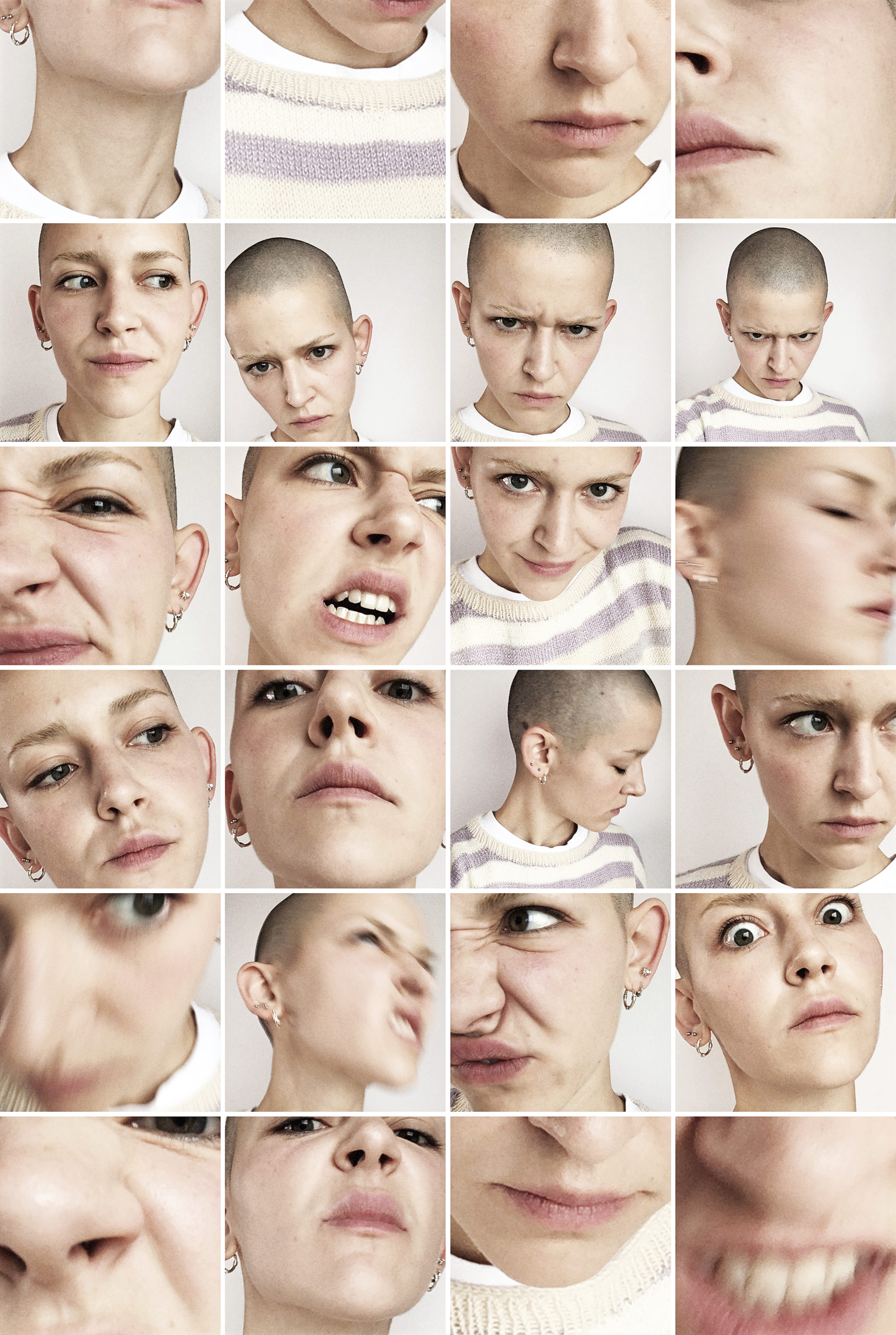

degree piece
HID is an expression of frustration with the invisibility of lesbian culture in Poland. It is my personal reaction to growing up in the Catholic culture of shame concerning sexuality, completely devoid of female homosexual representation, and the resulting sense of alienation that accompanies many queer girls in their teenage years. Supported by lesbian theory and iconography from beyond the western border (Judith Butler, Catherine Opie, Joan E. Biren, Gluck, Radclyffe Hall and Cunt Coloring
Book) and my own journalistic and photographic research, the collection is formally an exploration of the suit – a simple variation on a jacket, a shirt, a tie, and tailored men’s suit trousers. By combining the silkscreen printing technique with methods of bespoke tailoring, I wanted to create a representation that I myself wish I’d had access to while growing up. The representation of a proudly queer girlhood.

Born 1996. Bachelor’s studies at the Department of Fashion of the Faculty of Design of the Academy of Fine Arts in Warsaw in 2015–2020.
supervisor: Thorbjorn Uldam, MFA
The designer and his/ her communit
An essential part of fashion is working with the human body – in fact any form of fashion takes its starting point from the body, to fundamentally exist.
Clothing is constructed on the body, and garments float and rest on the surface of it to describe / portray / communicate the thoughts of the wearer, before the first word has been spoken. In that sense, the body can also be used as a living canvas for the designer to, on the surface of the body, conduct a scientific study of shape, volume, proportion, texture and colour.
In a world where time continuously accelerates and we live in unpredictable present circumstances, an essential question in the fashion industry is: How can we make clothes more than clothes?
Now, we can talk about the designers’ possibility to project and envision ideas of clothing on the body, but essentially it is the wearer of the garment that directs the attention of the designer. The relationship between the two is dynamic, and of quintessential importance in the work of Kasia Przytuła, where the two form a community. Clothing can have social impact – we have seen that in garments of subcultures in the 70ties and 80ties, where minorities adapted garments to give comfort and confidence in existence.
A sense of belonging.
In her collection, Kasia explores the subjects of sexuality, identity and essentially the idea of a community. Taking her starting point in the Polish lesbian community in the 80ties, Kasia researched extensively primary and secondary sources to build her design language of embodied memories, to essentially try to answer the questions: How can I make something unseen, seen; how can I give a voice to silence?
Her answer is one of monumental proportions; it is a common notion in the field of astroscience that gravity can make the invisible, visible. With bulky shapes built in strong craftsmanship, layered in memories of time and space, Kasia made sure every garment has a personal imprint; that every garment, however far away from the warmth of the body it might be, it has a story to tell that Kasia wants to share with the world and her community.